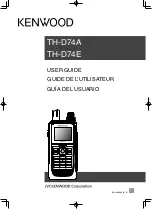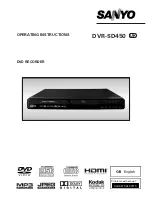
COMPONENT MAINTENANCE MANUAL
AVIATION PRODUCTS
Model FA5000
Rev. 02 Page 8
July 21/17
Description and Operation
23–70
−
30
Use or disclosure of information on this sheet is subject to
the restrictions on the cover page of this document.
er is sent to the CAM partition for every half seconds worth of data. The packet header
includes a time tag, a milliseconds since the last second time tag, the current power up
counter value, and the packet number from last power up.
The remaining three audio channels are rate reduced to 8 Ksamples/sec by dropping ev-
ery other word since all the channels are sampled at 16 Ksamples/sec. This is done be-
cause the quality of the 3 Channel audio data does not need to be as high as the quality
of the CAM audio data. The data is compressed individually using the g.726 algorithm
running on the BF527, and the resulting compressed frame of audio data is sent to the
proper partition on the CSMU via the Data Storage task.
Like the CAM data, a packet header is sent to the 3 Channel partition for every half sec-
onds worth of data. The packet header includes a time tag, a milliseconds since the last
second time tag, the current power up counter value, and the packet number from last
power up. A tachometer (rotor speed) reading and a discrete reading are made and
added to this header for recording. Following the header, the compressed audio data for
the channels is sent to the CSMU.
The three ChannelData array is 4500 bytes long because that’s the amount of data for .5
seconds worth of three channel compressed 8 Ksamples/Sec audio data. See Figure 7 –
CVR Task Flowchart.
A Read-After-Write operation is performed every time data is stored to the CSMU to verify
its accuracy. If there is a mismatch on the data, then a fault is generated.
The document reference is online, please check the correspondence between the online documentation and the printed version.












































